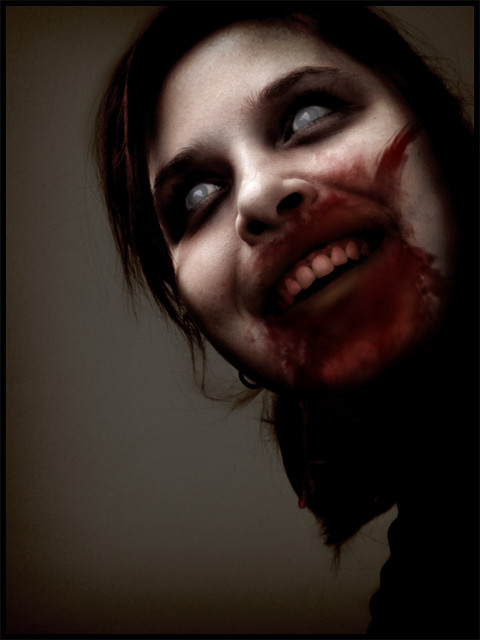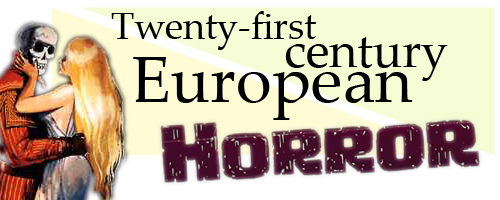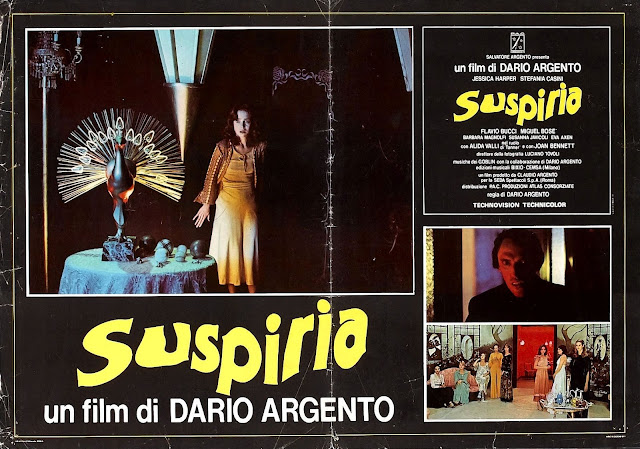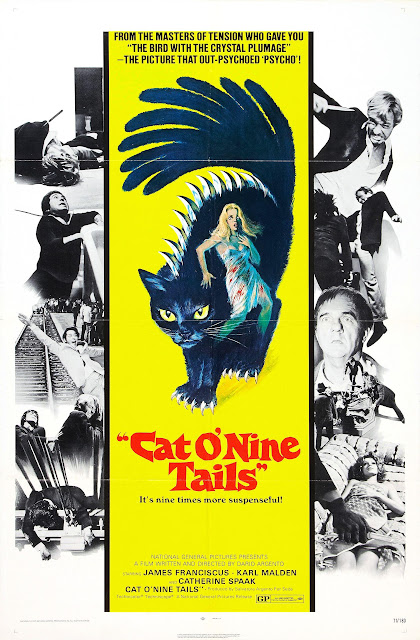Chopping Mall
Chopping Mall was my first blog, which I started way back in 2009. It was dedicated exlcusively to ridiculous and terrible films, which I watched a lot of back then. (So much time, so little work!)
I’ve resuced the posts from oblivion, to be preserved here for …uh… whatever.
It’s a pretty clunky process getting them out of blogspot (XML export, eww) and into here, so there may be a few formatting issues.
The death of cinema?
So I’ve been meaning to write this for a few days now. Shame it’s taken me so long…
As reported in the Guardian and many other places on Sunday, several big-name directors have joined the cinema industry in attacking movie-industry plans to shorten the amount of time between the cinema debut of a film and its home availability, by making video-on-demand (that’s streaming) films available as little (?) as two months after the film’s release.
They roll out some interesting claims to fight these plans: VOD releases will increase piracy, they say, and will force cinemas to close. These are BAD THINGS and, if big, important names are saying them they MUST BE TRUE. Right?
Wrong.
One of the marks of almost any cultural industry (ugh, I hate pairing those words) is that those who’ve climbed their way to the top tend to have an (entirely to be expected) fondness for the status quo. Things are how they are and should be as they should be. Why would you change anything?
Sadly for them (but not for us), life doesn’t work like that. We like progress. We like exciting new things. We like big shiny fun things that no-one else in the history of mankind has ever had. Hence we invent stuff, we find new ways to look at the world, we radically alter our relationship with life, culture, art and the environment. I am by no means suggesting that this is always positive - it’s not, the obscene quantity of human-created human suffering is testament to that - but I am suggesting that it’s inevitable: we’re just not adapted to maintaining the status quo. Things will change.
So let’s return to Earth for a moment and go back to look at their claim. It will increase piracy. It will. Will it? The evidence that it would is very shaky. Let’s be blunt: it’s very easy to find films on the internet. I (obviously) am not about to link to anywhere you can get it but the current box office smash Fast and the Furious 5 is all over the internet. I have no idea what kind of quality it is, but it’s there and that’s enough.
Now, what we have here is the Film Industry’s Music-Industry-Moment. For the music industry, this happened somewhere around the whole Napster deal. Faced with a very clever technology (hello internet!) capable of delivering high quality content at (even then) fairly decent speeds, they were poised to make an industry revolution. They bottled it. Years later and the Beatles music has only just been made available online (November last year). No-one was keeping count, but thousands of Beatles albums were certainly downloaded in that time. Today’s online music sites still often provide higher quality music than some shops sell.
The point I’m approaching (slowly) here, is that refusal to engage with digital distribution for fear of increased piracy is futile and narrow-minded. The Film Industry has to take the initiative and provide a decent service that people will pay for before they get used to downloading films. If they wander blindly into the same place as the music industry there is no way back.
The second point, and I think the one I object to more, is that it will mean cinemas to close. This relies on out automatic linking of “closing things = bad” without pausing to think about the relation in question: why will people choose to watch a film at home rather than in a cinema?
Some of the answers are related to progress again - we have bigger better TVs with bigger better speakers, the gap between home and cinema has narrowed - but there’s also an implicit condemnation of the way cinemas are run and have been run for years.
Cinema visits in the UK are horrendously expensive. The price for a single ticket is already bordering on the price for a DVD in some cases. I might like the cinema but I can’t afford to go as much as I’d like. If me and four friends each bought a DVD we’d have spent little more than it’d cost the five of us to go to the cinema and we’d see five times as many films.
It’s also astonishing (and, depressingly true) how regular it is to hear serious film-fans describe the cinematic experience as being deeply disappointing. We brave the ticket prices, stump up and march in. The sticky floors and chewing-gum covered seats are what welcomes us. The bunches of screaming kids chucking sweets at each other and talking continues throughout. You leave thinking, ‘I wish I could’ve seen that in my own house’. Seriously, what would it cost a cinema to have a member of staff to kick out the people who ruin a film for everyone?
So there we have it. Cameron, Bigelow et al are clinging to what they love. The cinemas are using this as another excuse to neatly avoid considering why less people go to the cinema and they’re all intent on digging in their heels to slow the inevitable. And, I should add, by the inevitable, I certainly don’t mean the death of cinema. This is not the end. This is another chapter. I love the cinema and will continue to go but it shouldn’t need to be carefully protected: to survive it must make progress too, it must work to provide an absolutely inimitable experience that we’re prepared to pay for.
European Post-2000 Horror

Rather splendid zombie, by ‘scabeater’, under a CC-by-nc-nd licence
So… after the brief but exciting burn-out that was the intensive Argento-fest in March, it’s time to move to a bit of a new project. This one, rather than the as-much-as-possible-in-a-week format, will be somewhat more drawn out, allowing me to do other stuff in between. Like eating. And sleeping.
The project plan is to watch more Horror. Specifically, Horror from Europe (this is not a slight on the rest of the world, honest! I’d just like to see more Euro-Horror). Even more specifically, European Horror from the last ‘decade’. I’m taking decade to mean Y2K onwards, so perhaps should better say the project’s full name ought to be: 21st Century European Horror.
Now I’ve seen a few of these already - I expect you have too. I’m not going to be strict about only watching new things, about the boundaries of Europe or… well, about anything really. This is supposed to be fun, after all.
There’s a nice list by someone called ‘propelas’ here of some of the highlights of C21EH (as it shall now be known). ‘ratty1984’ also contributes a short list over at IMDB. Although I love lists (I really do…), my intention here is not to make a list, I have no plans to be comprehensive about this, I just want to watch some horror.
And with films like Martyrs, El Orfanato, [Rec] (and [Rec]2) and Sauna (AKA Filth) on the list, it should be good fun. c21EH, here we come…
Edit: And new project means new banner, hurrah!

Suspiria

SUSSSSSSSSPIRIA! On a great big screen!
Last night, after a week of Argento film’s, I got to see his spellbinding masterpiece Suspiria on a cinema-screen in the National Media Museum as part of the Bradford International Film Festival. I’d obviously wound myself into a bit of a frenzied excitement about it through the week and it certainly did not disappoint.
Every time I hear someone say they choose to watch films at home rather than at the cinema, mostly due to all the other film-goers, I think to myself “You’ve just been going to the wrong films with the wrong people!”. Last night’s audience had almost all seen the film before and sat in captivated silence, tittering nervously at the occasional gentle comic moments and - even before fun - audibly anticipating oncoming moments of horror. If a bad crowd can ruin a film, a great crowd can make one. Not that Suspiria needed any help in that respect…
My first and only minor gripe is that it was very sadly the cut version. This was an original cinematic print taken from the Media Museum’s extensive archive and so was a print of the X-rated version that the BBFC approved in 1977, after demanding 1m13 of cuts (Cut info at Melon Farmers). Now, to those not familiar with horror film, particularly of BBFC-butchered horror film of a couple of decades ago, 1m13 might not sound very much. It also might not sound so important if I tell you that the full extent of the cuts involved removing a series of close-ups of stabbing, someone struggling through barbed wire and a dog biting a man’s throat. Cuts, however, do make a difference to the rhythm and pacing of a film. Suspira is a film that, like so many Argento, thrives on the atmospheric build-up, to the point that the death scenes actually become a kind of release. For a couple of them to be dramatically shortened here was a shame.
Still, whilst that was the downside to it being an original theatrical print, there were certainly upsides. The first (and some would reject this) was that the image did have a wonderfully scratchy look. Anyone who’s seen a film in cinemas that was filmed entirely in HD-digital knows how clinical and sterile it can look (I’m looking at you Public Enemy!) and, whilst I’m not suggesting scratchy is the way forward, there was certainly something enjoyable about watching a 70s film I thought I’d never see in a cinema, complete with all the visual wear and tear that a 30 year old 35mm reel has experienced (even if carefully looked after by the Museum)
The second benefit was the sound. The sound! Anyone who’s seen Suspiria, an Argento film or evne read any of my blog from this week will know that sound makes up an enormous part of Argento’s films. Suspiria is (arguably) the very best of these, scored again by the ever wonderful Goblin, and positively throbs, jangles and crashes at you. Original print, combined with cinema sound system made it an utterly fantastic experience that I’m sure I’ll never be able to repeat (especially as most commercial releases saw the soundtrack savagely remixed).
The film itself is a whirling, semi-nonsensical, breathtaking journey of colour and sound, moving from the giallo murder-mystery into something a whole lot more supernatural, with savagely brilliant results. I really don’t want to say too much more about the actual film, save to say that it is pretty much the best example of all the techniques I’ve been seeing this week in all his other films. It’s not perfect (the scene-with-the-bat is awful) but it’s brilliant, beautiful and should be seen by everyone.
Argento Week's FINALE!

Of course, all that Dario Argento film watching wasn’t just for fun, it was all to build up to the fantastically exciting screening of Suspiria tonight in the Bradford International Film Festival. It’s hardly going to be worth me reviewing it - I love the film so much already a review will probably be just a string of superlatives and smiley faces - but I’m hoping that, given the big screen treatment, I’ll find even more to love about it!
Cat O' Nine Tails

So here we are! Last night’s film, which was number 7 and brought my week of Argento films (before Suspiria tonight) to a close, was Cat O’ Nine Tails, another one that I hadn’t seen before. I was, I must say, pleasantly surprised. It falls, again, into the giallo camp more than the horror side - although they all show elements of both - and, being another very early film I must admit I didn’t expect as much fun as I got.
Several online reviews - especially those from Argento fans - are really quite negative about this film, describing it as a fairly ham-fisted follow up to Bird with the Crystal Plumage, but I couldn’t agree less. The story telling here was tight and interesting, the dialogue was er… no more clunky than we might expect and the characters and motivations were interesting.
Having watched it the day after watching Profondo Rosso, it was all too easy to see this as a blueprint for the later, more superior murder thriller; many of the aspects that were to become Argento staples are still in nascent form here. The camera is subjective and active but… not as intelligently so as in later films (some of the camera angles here seem less surprisingly wonderful and more just ‘different’), the music is absolutely instrumental (no pun intended…) in the creation of a dens atmosphere but never quite matches the iconic heights of later films - it definitely isn’t particularly memorable - the plot is full of red-herrings and hidden clues but the denouement is nowhere near as satisfying as later Argento, particularly Profondo Rosso.
It would be certainly true to call this one of the least “Argento-esque” Argento film but that’s not necessarily a bad point. I’d suggest that the film stands up pretty well on its own merits and, if the ending is perhaps a little rushed, is definitely an enjoyable watch. It’s a film that’s perhaps best recommended to those who aren’t as keen on the more flamboyantly visuals of the later films, or to those keen to see where those visuals came from. It’s certainly not perfect but it’s far from the weak slasher I had been lead to expect.